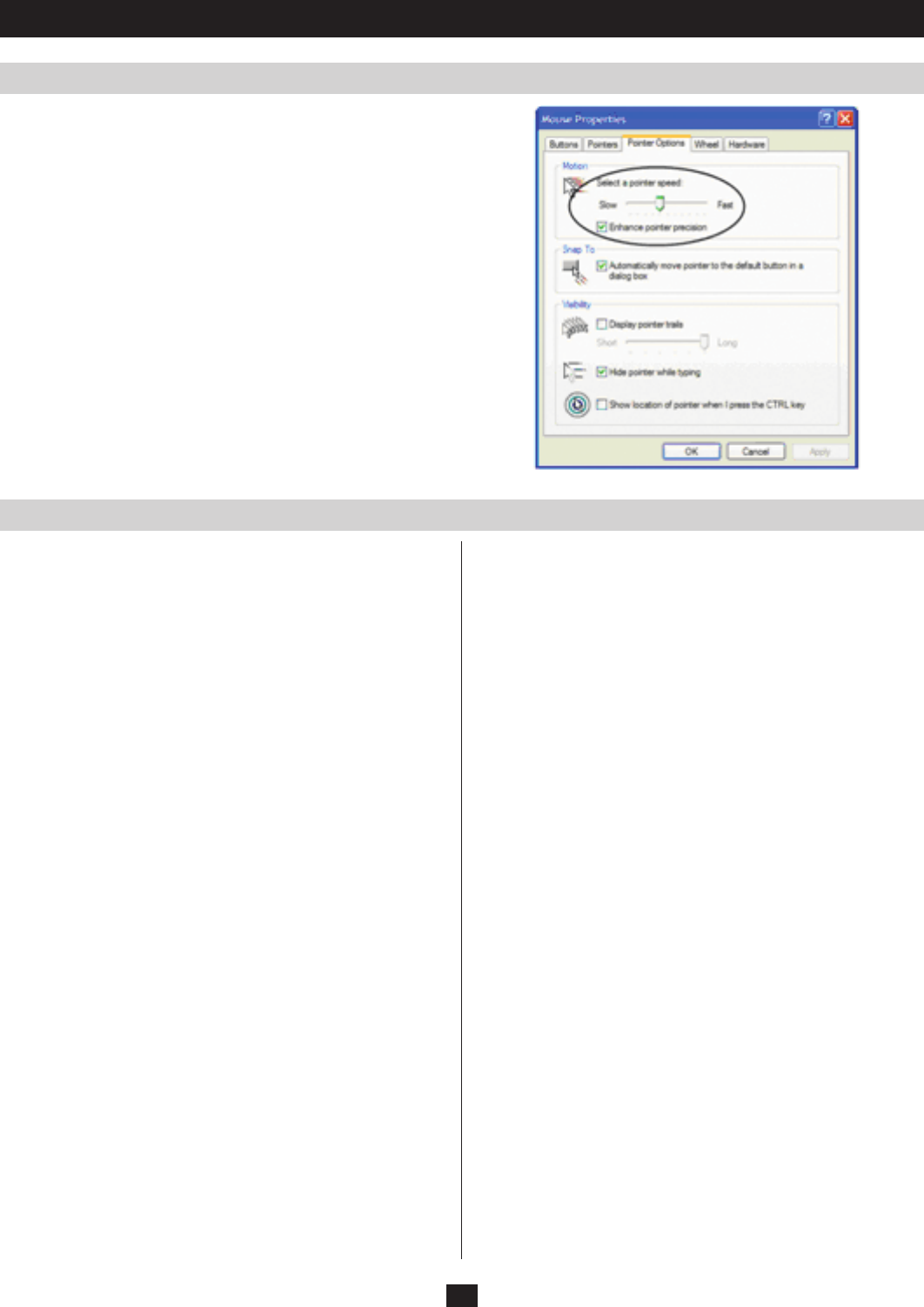
30
The Windows Client
Windows
Sun / Linux
Windows XP / Windows Server 2003:
1. Open the Mouse Properties dialog box (Control Panel → Mouse).
2. Click the Pointer Options tab.
3. Set the mouse speed to the middle position (6 units in from the
left).
4. Disable Enhance Pointer Precision.
Windows ME:
• Setthemousespeedtothemiddlepositionanddisablemouse
acceleration. (Click the Advanced button to get the dialog box for
this.)
Windows NT / Windows 98 / Windows 95:
• Setthemousespeedtotheslowestposition.
Open a terminal session and issue the following command:
Sun: xset m 1
Linux: xset m 0
Mouse Sync Mode
In the Customization Settings (see page 27) screen there are two
mousesyncmodes;Automatic and Manual.
• Automaticis selected as the default, and will automatically sync
theremoteandlocalmousepointers;however,thisfeatureonly
supports USB mice on Windows and Mac (G4 or higher) systems.
For all other configurations, we recommend that you select Manual.
• WhenManual is checked, all mouse syncing must be done
manually with the syncing procedures discussed in the following
sections. Sun systems must use the Manual setting.
USB IO Settings
The Customization Settings (see page 27) screen contains a
section called USB IO Settings, which can have an affect on mouse
functionality. When connecting to a computer or KVM switch with
the USB connector for keyboard and mouse, it is necessary to access
the OS drop-down list in this section to select the OS platform being
used. Choices are PC, Mac1, Mac2, and Sun. PC is the default OS.
Note: In general, Mac 1 works best with older Mac OS versions,
whereas Mac 2 works best with newer ones. This may vary, however.
If you encounter problems with one setting, try selecting the other
one.
Adjust Mouse Hotkey
The Windows Client Control Panel, which is discussed in the
following sections, contains a Hotkey (Alt + M by default) that syncs
the local mouse pointer with the remote mouse pointer. Simply press
the (Alt + M) Hotkey, and the local and remote mouse pointers should
sync within a few seconds.
Auto-Sync Button
In the Video Settings Menu, which is discussed in the following
sections, there is an Auto-Sync button that also serves to sync
the local and remote mouse pointers. In most cases, performing
an Auto-Sync will align the two mouse pointers.
Video Quality Slider Bar
The Video Settings Menualsocontainsasliderbarthatadjuststhe
quality of the video being displayed on the monitor. The higher
the quality of the video, the more data is being passed through the
network. Higher volumes of data will cause a delay in the time that it
takes for your keyboard and mouse input to appear on the monitor. To
decreasethequalityofthevideoandimproveresponsetime,adjust
the Video Quality slider bar to a lower setting.
Detect Tolerance Slider Bar
Also in the Video Settings Menu, the Detect Tolerance slider bar can
beadjustedtolimittheamountofinformationbeingsentthrough
the network. If you are having problems with keyboard and mouse
response time, setting the Detect Tolerance slider bar to high can help.
Grayscale
Another icon contained in the Windows Client Control Panel (see
the following section) is the Grayscale icon. Clicking this icon will
force the video on the monitor to be displayed in grayscale, which
can reduce the amount of data traveling through the network, and
improving keyboard and mouse response time.
